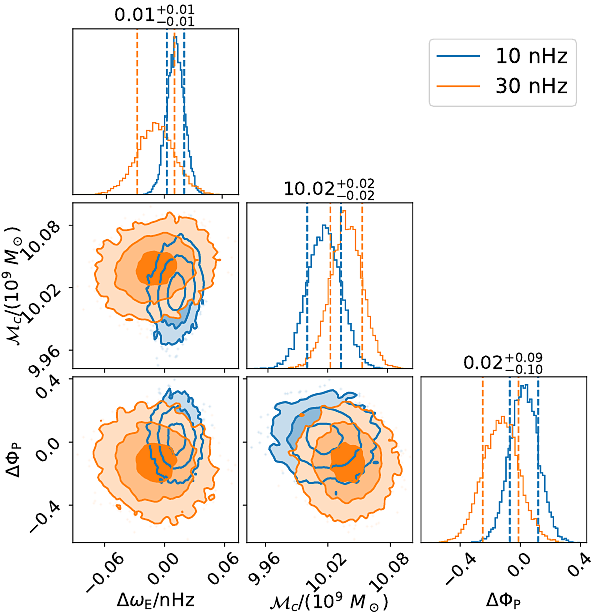Sub-parsec precision measurement of pulsar distances with nanohertz gravitational waves

Sub-parsec precision measurement of pulsar distances with nanohertz gravitational waves
Jiming Yu, Zhen Pan
AbstractThe recent evidence of nanohertz (nHz) gravitational wave (GW) background by pulsar timing array (PTA) collaborations has sparked considerable interest in understanding its astrophysical origins, particularly regarding supermassive black hole binaries (SMBHBs). In this work, we focus on individual SMBHBs that will be hopefully detected in upcoming PTA observations. The effect of nHz GWs on the pulse arriving times is in general decomposed as a pulsar term and an Earth term, where the pulsar term encodes the pulsar-Earth distance as a phase shift relative to the Earth term, but is usually treated as an extra noise source since the pulsar distance is in general not well measured with uncertainty larger than the wavelength of nHz GWs. We propose that the pulsar distance could be constrained by combining the phase information of multiple SMBHBs that are individually resolved. Using Markov chain Monte Carlo (MCMC) simulations, we demonstrate that the pulsar distances can be measured to better than $0.4$ pc (1 pc) for pulsars at $D\sim 1$ kpc ($\sim 2.2$ kpc) with 30 years of observations by a 20-pulsar PTA with a noise level of $\sigma_{\rm n}=20$ ns in the Square Kilometre Array (SKA) era.